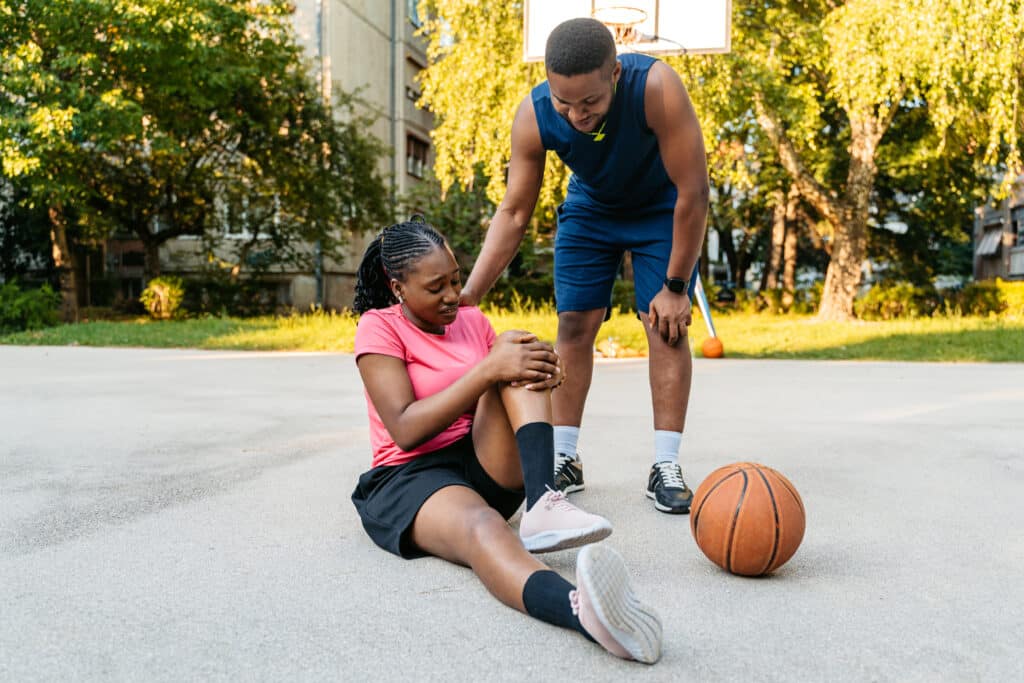
Patellar tendon strain, often referred to as jumper’s knee, is a common sports injury that can cause mild to severe pain in the knee joint. This condition occurs when the patellar tendon, which connects the kneecap to the shinbone, becomes inflamed or damaged due to repetitive strain. While it can be a minor issue that resolves on its own, in some cases, it can be a more serious condition that requires intervention from a chiropractor or physiotherapist. In this blog, we will discuss the symptoms and signs of patellar tendon strain and when seeking professional help is necessary.
Signs and Symptoms of Patellar Tendon Strain:
The main symptom of patellar tendon strain is pain in the knee joint, usually located at the inferior pole of the patella (kneecap). This pain can range from mild to severe and can be experienced during or after exercise, particularly activities that involve jumping, running, or other quick changes in direction. Other signs and symptoms may include swelling around the knee joint, tenderness to the touch, and stiffness or tightness in the quadriceps muscle.
When to Seek Professional Help:
If you experience persistent knee pain or any of the symptoms mentioned above, it is best to seek professional help from a chiropractor or physiotherapist. In addition, if your knee pain affects your daily activities, such as walking or climbing stairs, it is essential to have your condition evaluated by a professional. Delaying treatment can cause the condition to worsen and lead to long-term complications such as chronic pain, decreased range of motion, and decreased sport performance.
Non-Surgical Treatment Options:
In most cases, patellar tendon strain can be successfully treated without surgery. Treatment options may include rest, ice, compression, and elevation (RICE), physiotherapy, and chiropractic care. Resting can help reduce inflammation and pain, while ice and compression can help reduce swelling and promote blood flow to the affected area. Physiotherapy and chiropractic care can help promote healing, increase range of motion, and strengthen the muscles surrounding the knee joint.
Surgical Treatment Options:
In some severe cases, surgery may be required to repair or extract the damaged portion of the patellar tendon. This is usually performed as a minimally invasive outpatient procedure and is followed by a rehabilitation program to help restore function and prevent recurrence.
Prevention Tips:
Taking steps to prevent patellar tendon strain can help you avoid this painful condition altogether. Some prevention tips include a proper warm-up before engaging in physical activity, wearing appropriate footwear, using proper technique during exercise, gradually increasing the intensity and duration of your workouts, and taking adequate rest and recovery time between sessions.
Patellar tendon strain can be a debilitating condition that can limit your daily activities and negatively impact your quality of life. However, with the proper treatment and care, most people can recover fully and return to their usual activities. If you are experiencing any symptoms of patellar tendon strain, don’t hesitate to seek the advice of a chiropractor or physiotherapist. They can provide you with a personalized treatment plan to help you get back to feeling your best.
If you have any questions or would like to explore further, please book a free, no-charge online appointment with either myself, Sakshi Rupani, BPT, PT, or another CARESPACE physiotherapy practitioner. We are happy to listen and are here to help!

